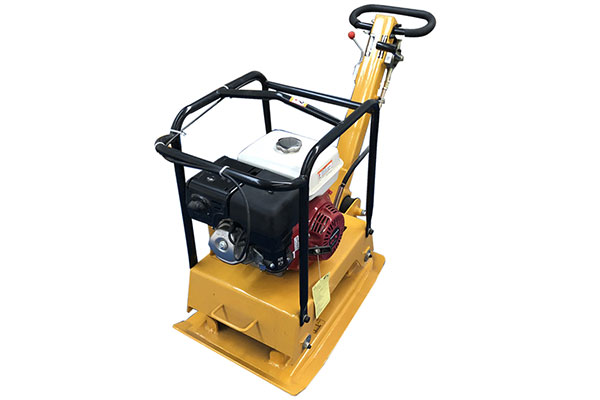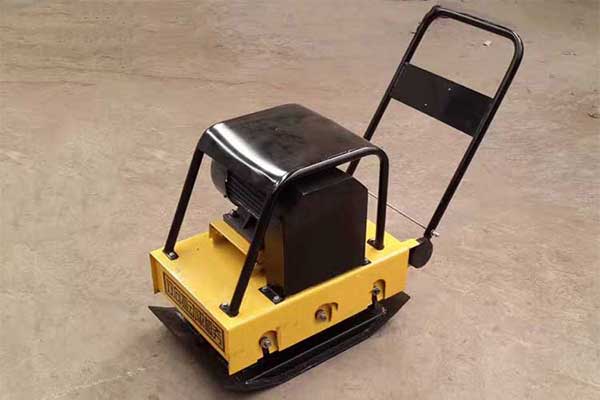How to Maintain a Plate Compactor: A Comprehensive Guide
Plate compactors are essential machines in construction, widely used to compact soil, gravel, or asphalt for a solid and flat foundation. Proper maintenance of a plate compactor is crucial for ensuring optimal performance, longevity, and safety. Whether you’re a construction professional or a DIY enthusiast, following these steps can help keep your plate compactor in top condition.

1. Regular Inspection
The first step in maintaining any machinery is conducting regular inspections. Before and after each use, it’s important to inspect the compactor for any signs of wear or damage. Check for:
- Loose bolts or parts: Ensure all bolts, nuts, and screws are tightened.
- Vibratory plate: Inspect the plate for cracks or warping, which can hinder performance.
- Air filter: A dirty or clogged air filter can reduce engine efficiency, so it should be cleaned or replaced as necessary.
- Belts: Check the drive belt for tension and signs of wear. Replace it if you notice fraying or slackness.
2. Clean After Every Use
A clean plate compactor operates more efficiently. After each use, clean the machine thoroughly to remove dirt, debris, and any buildup that could affect its performance. Pay close attention to:
- The bottom plate: Remove any soil, asphalt, or gravel stuck on the plate.
- The engine: Wipe down the exterior to prevent the accumulation of dust or debris, which can lead to overheating.
- Cooling fins: Ensure they are free from debris to promote optimal engine cooling.
3. Lubricate Moving Parts
Proper lubrication reduces friction between moving parts, preventing wear and tear. Depending on the manufacturer’s recommendations, you should:
- Lubricate bearings to ensure smooth plate movement.
- Check the oil levels in the engine regularly, and change the oil after the first 20 hours of use, then at regular intervals (typically every 100 hours). Always use high-quality oil that meets the specifications of your compactor’s engine.

4. Change the Air Filter
A clogged air filter can lead to reduced engine performance or even damage over time. Depending on the working environment, dust and debris can accumulate quickly in the air filter. Clean or replace the filter every 50-100 hours of use. If you operate the machine in a particularly dusty environment, this should be done more frequently.
5. Check Fuel and Oil Levels
Ensure that the plate compactor has sufficient fuel and that you are using the correct type of fuel. Additionally, always check the oil level before operating the machine. Running the engine with insufficient oil can lead to engine failure.
- Fuel: Use fresh, clean fuel. Stale fuel can clog the carburetor and lead to starting issues.
- Oil: Regularly change the engine oil to ensure smooth operation. Follow the manufacturer’s guidelines for the recommended type and grade of oil.
6. Check the Drive Belt and Clutch
The drive belt and clutch are crucial components in transferring power from the engine to the plate. Over time, these parts may wear out or become loose.
- Belt: Inspect the belt for signs of wear, and replace it if necessary. Proper belt tension is essential for efficient operation.
- Clutch: Check for smooth engagement and disengagement. A malfunctioning clutch can lead to erratic plate movement.

7. Monitor Vibratory Mechanism
The vibratory mechanism is the heart of the compactor. Any issues here can significantly reduce the machine’s performance.
- Check for abnormal vibrations: If the machine is vibrating unevenly or making unusual noises, it may indicate a problem with the vibratory mechanism or loose parts.
- Grease the eccentric shaft: This should be done every 200-300 hours of use or as specified in your manual.
8. Store Properly
Proper storage is essential for prolonging the life of your plate compactor. When not in use:
- Store the machine in a dry, sheltered area to avoid exposure to the elements.
- Drain the fuel if storing the compactor for an extended period to prevent the fuel from becoming stale.
- Clean the compactor thoroughly and cover it to protect against dust and dirt accumulation.
9. Use Genuine Parts
When replacing any parts on your plate compactor, always use genuine or manufacturer-recommended parts. This ensures the best performance and reduces the risk of further damage. Counterfeit or incompatible parts can lead to equipment failure and void warranties.
10. Follow Manufacturer’s Guidelines
Finally, it’s essential to follow the manufacturer’s manual for specific maintenance intervals and recommended service. Different models may have varying maintenance needs, so adhering to the manual ensures optimal performance and prevents premature breakdowns.
Conclusion
Maintaining a plate compactor is straightforward but vital for its efficiency, durability, and safety. Regular inspections, cleaning, lubrication, and part replacements are all key steps in ensuring your machine operates at its best. Following these guidelines will not only save you from costly repairs but will also extend the life of your plate compactor, keeping your construction projects running smoothly.

